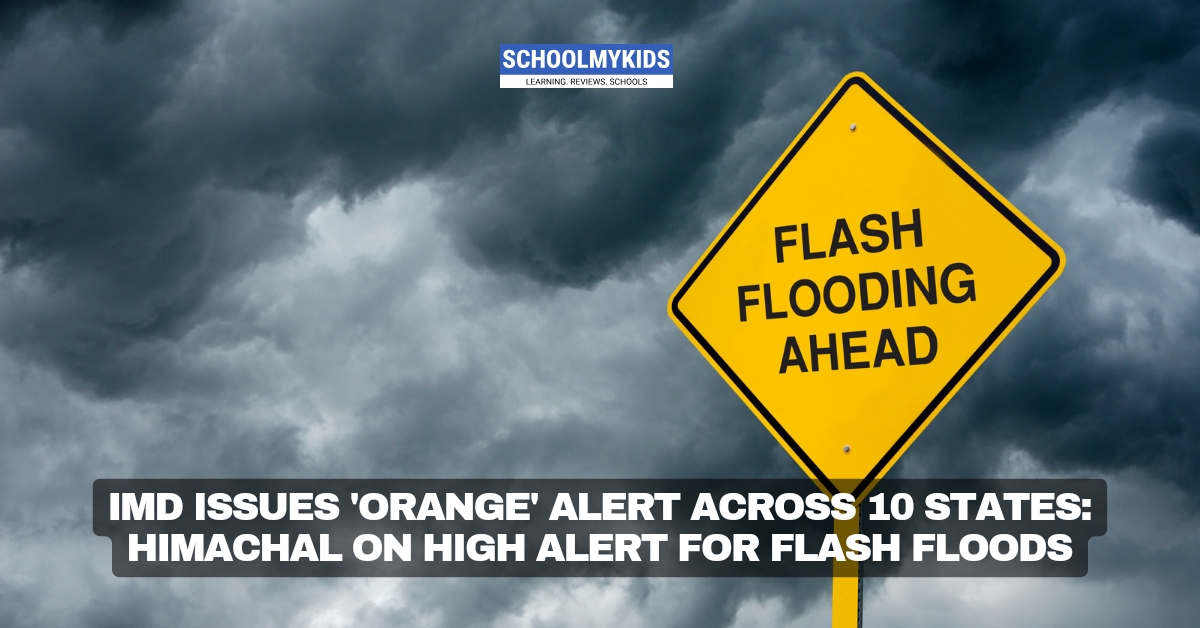The India Meteorological Department (IMD) has issued an ‘orange’ alert for 10 states across India, indicating the likelihood of severe weather conditions, including heavy to very heavy rainfall. The states under alert include regions that are particularly vulnerable to heavy downpours, potentially leading to significant disruptions in daily life. The IMD has also issued a flash flood warning for Himachal Pradesh, a state already grappling with landslides and heavy rainfall.
An ‘orange’ alert serves as a cautionary signal, urging local authorities and residents to stay vigilant and take necessary precautions to prevent loss of life and property. With monsoon rains intensifying, these regions are at an increased risk of floods, waterlogging, and landslides, especially in hilly areas like Himachal Pradesh. The situation calls for immediate preparedness and response to mitigate the impact of these natural events.
Understanding Floods: What Children Should Know
Floods are a common natural disaster in India, especially during the monsoon season. They occur when excessive rainfall causes rivers, lakes, or oceans to overflow, leading to water inundating normally dry land. Floods can happen quickly, often with little warning, especially flash floods that occur in hilly areas like Himachal Pradesh. Understanding floods and how to stay safe is crucial, particularly for children.
How Floods Happen
Floods can be caused by a variety of factors, including:
- Heavy Rainfall: Intense rain can overwhelm the drainage systems, causing water to accumulate on land.
- River Overflow: When rivers receive more water than they can carry, they may overflow their banks.
- Dam Breaks: If a dam holding back water fails, it can release large amounts of water suddenly, causing floods.
- Coastal Flooding: Storm surges during cyclones can lead to flooding in coastal areas.
Flood Safety Tips for Children
- Stay Informed: Always listen to weather updates and warnings. If you hear an alert about a flood, take it seriously.
- Avoid Floodwaters: Never play or walk in floodwaters. They can be deeper than they appear and carry strong currents that can knock you off your feet.
- Stay Indoors: If there’s a flood warning, stay inside your home or school. Don’t venture out unless it’s absolutely necessary.
- Know Emergency Contacts: Make sure you know the phone numbers of emergency services like the police, fire department, and ambulance.
- Prepare an Emergency Kit: Have a kit ready with essentials like water, food, a flashlight, a first aid kit, and important documents.
- Evacuate if Needed: If authorities tell you to evacuate, do so immediately. Follow the instructions of adults and move to higher ground if possible.
Preventing Floods: What We Can Do
While floods cannot always be prevented, there are steps that can be taken to reduce their impact:
- Plant More Trees: Trees absorb water, reducing runoff into rivers and streams.
- Build Flood Barriers: In flood-prone areas, barriers like levees, dams, and floodwalls can be constructed to control water flow.
- Proper Drainage Systems: Ensuring that cities have effective drainage systems can help manage rainwater and prevent waterlogging.
- Awareness and Education: Educating communities, especially children, about the dangers of floods and how to stay safe is crucial.
Conclusion
With the IMD’s recent alerts, it is clear that the monsoon season can bring about dangerous conditions that require caution and preparedness. Teaching children about the causes and dangers of floods, as well as how to stay safe during such events, is an essential part of flood preparedness. By understanding these natural disasters and taking proactive steps, we can reduce the risks and ensure the safety of our communities.









Be the first one to comment on this story.